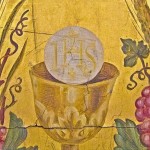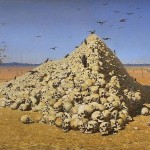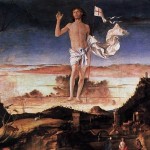
Let’s get back to the principles of Rabelaisian Catholicism. It all started with a post about the problem of the good (instead of evil), then one about the permanent pollution of Christianity with Greek philosophy, another one on the essential pagan additions to Catholic Christianity, and it made its last appearance in a post about David Bentley Hart’s contamination of the doctrine of God.
Rabelaisian Catholicism posits that there nothing is outside the purview of Christianity, that pluralism and contamination is essentially incarnational. Being hybrid is the guiding thread that’s behind the impulse to make everything a holy mess, rather than a nicely ordered and minimalist Protestant church–wine over grape juice.
Some post-Vatican II Catholics worry a lot about the purity of the liturgy and how much the reforms evacuated the sacred from our lives. James Hitchcock’s The Rediscovery of the Sacred is an early example of this fastidiousness. The book is lying right here next to my laptop and the mess on my desk. The problem is (as Hitchcock sees it) the loss of sacred. He defines the sacred as being “in traditional Catholic [the word that]… designates special persons, times, places, or objects viewed as having an especially holy character.” According to the author, the return of the sacred would then turn Catholics back on the right path toward a legitimate appropriation of Vatican II and unity.
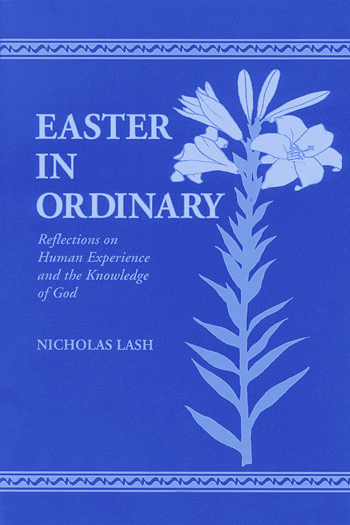
Such assumptions seem to run counter to what I recently read in Nicholas Lash’s Easter in Ordinary:
“If Christianity is a school for the production of persons in relation to the unknown God through discipleship of the crucified, then there is nothing that we do and suffer, think, or feel, or undergo, which may not contribute to such schooling. It follows there is no single activity, or cluster of activities, which alone counts as ‘Christian teaching.'”
Lash’s approach is a lot more holistic than Hitchcock’s, because there is nothing that comes from the hand of God more than something else. The notion that every damn thing after another in our lives is given to us in order to educate us into the Mystery, that it does so through the discipleship of the crucified, reminded me of a figure who not only looms large in my life, but also in the thought of the last three popes, especially Francis as I’ve written here. I’m thinking of the founder of CL, Fr. Giussani.
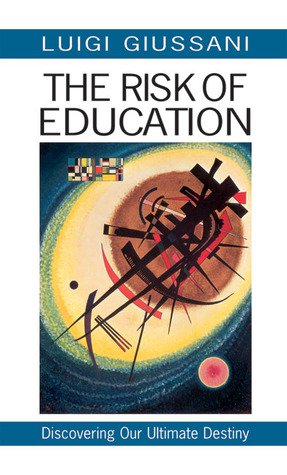
Now compare what Lash says to Giussani in The Risk of Education:
“A great Austrian theologian gave me what I hold to be the best definition of education I have found up to now. He said that education is introduction to reality as a whole. Now why does man need to be introduced to reality as a whole? Because, as the Pope keeps on repeating when he speaks of education or of culture, which is the same thing—because education is the main instrument of culture and in the end the two words have similar roots –, man has to be educated in order to become more himself, to be realized, for man does not realize himself unless by means of an encounter with something else.”
Giussani and Lash seem to be on the same page, don’t they? But this is not merely a modern disease. Just to prove it to you I’ll have you take a look at a classic blurring of the lines between the sacred and secular. This passage comes from an 18th century spiritual master, Fr Jean-Pierre de Caussade, in his classic, Abandonment to Divine Providence:
“There is not a moment in which God does not present Himself under the cover of some pain to be endured, of some consolation to be enjoyed, or of some duty to be performed. All that takes place within us, around us, or through us, contains and conceals His divine action.”
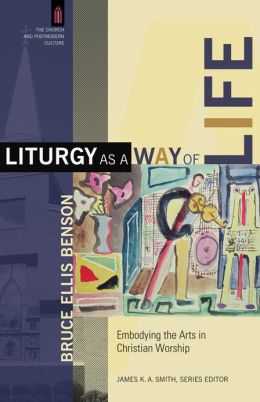
Everything is within bounds for these three distinguished theologians.
But does this mean that the liturgy, statues, or holy-days have no significance whatsoever? No, not necessarily.
Bruce Ellis Benson provides an understanding of the liturgy that breaks through the false dichotomy between the sacred and the profane in his Liturgy as a Way of Life. His work has interesting echoes with what the Polish philosopher-theologian Dariusz Karlowicz does in the excerpts from his works I’ve posted here, here, and most importantly, in a long preview of his work here. On their accounts the liturgy that goes on in our churches is a spiritual exercise that trains our minds and bodies, our desires, to be responsive to the call of God in everything that we do. Such an understanding takes the liturgy out of the sanctuary and gives it something to do past Sunday. These ways of thinking are ancient, in fact, they are more ancient than Christianity.
And so to cap it all off with a burst of Rabelaisian blurring of lines: William T. Cavanaugh, in his Migrations of the Holy suggests the liturgy is not sacred, or at least not sacred in the way we moderns tend to think about it:
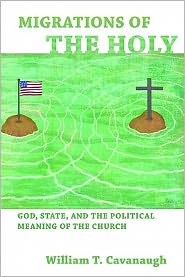
“Today the most significant misunderstanding of the Christian liturgy is that it is sacred. Let me clarify. The problem is that ‘sacred’ has been opposed to ‘secular,’ and the two are presumed to describe two separate—but occasionally related—orbits. The problem is not simply that this separation leaves the church’s liturgy begging for relevance to the ‘real world.’ The problem is rather that the supposedly ‘secular’ world invents its own liturgies, with pretensions every bit as ‘sacred’ as those of the Christian liturgy, and these liturgies can come to rival the church’s liturgy for our bodies and our minds. In this brief essay I want to explore in particular some of the liturgies of the American nation-state. I will suggest first that such liturgies are not properly called ‘secular,’ and second, that the Christian liturgy is not properly cordoned off into the realm of the ‘sacred.’”






